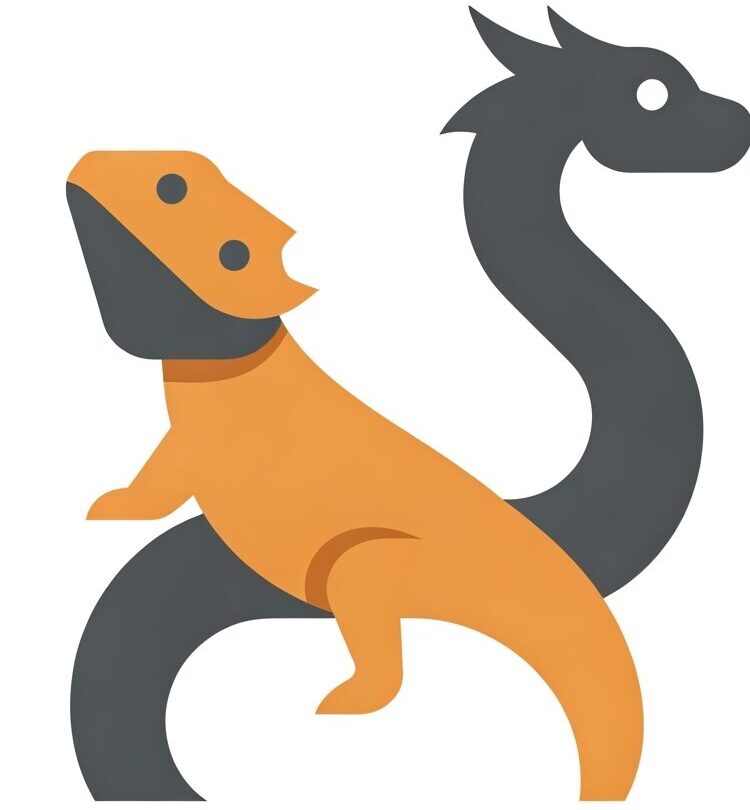Why is My Bearded Dragon Head Bobbing? Common Causes Explained
Seeing your Bearded Dragon suddenly bobbing its head can be a little alarming, especially if you’re new to reptile ownership. Don’t worry, we’re here to help! This article will explore the common reasons why your beardie might be exhibiting this behavior.
Understanding Head Bobbing in Bearded Dragons
Head bobbing in Bearded Dragons is a complex behavior that can sometimes be perfectly normal, but it can also indicate a problem. It’s a form of communication, and understanding the context in which it occurs is crucial. While occasional, slow head bobs might be a sign of recognition or acknowledgement, frequent or aggressive head bobbing usually indicates something else is going on. Therefore, it is important to observe your dragon’s behavior for any other symptoms and consult your vet for medical advice when you have concerns.
Common Causes for Head Bobbing
Here are some of the most likely reasons your Bearded Dragon might be bobbing its head:
-
Dominance and Territory: Bearded dragons are naturally territorial animals, and head bobbing is a common way for them to assert dominance, especially males.
- If you have multiple dragons, the dominant one might head bob to establish their position.
- This can also happen if they see their reflection or another lizard outside the enclosure.
- A fast, vigorous head bob, often accompanied by a puffed-up beard, is a clear sign of dominance or aggression.
-
Communication and Courtship: Head bobbing is also used to communicate with potential mates.
- Males will often head bob to attract females during breeding season.
- Females may respond with a slower, more subtle head bob to show interest.
- This type of head bobbing is usually less aggressive and more rhythmic.
-
Environmental Issues: Incorrect temperature, lighting, or enclosure setup can stress your dragon, leading to head bobbing.
- Temperature: If the basking spot is too hot or the cool side is too cold, your dragon might be uncomfortable and stressed.
- Lighting: Improper UVB and UVA lighting can affect their behavior and health.
- Enclosure Size: A too-small enclosure can lead to territorial disputes or general stress.
- Substrate: If the substrate is not proper for digging or is harmful if ingested, it may cause distress.
- Lack of Hides: Lack of hides will cause the dragon to feel exposed and unsafe.
-
Stress Factors: Anything that causes stress to your Bearded Dragon can trigger head bobbing.
- Handling: Excessive or rough handling can be stressful.
- Changes in Environment: Moving the enclosure, introducing new objects, or even rearranging the decor can upset them.
- Loud Noises: Constant loud noises or vibrations can be disruptive.
- Other Pets: The presence of other pets (especially predators like cats or dogs) can be stressful, even if they’re not in direct contact.
-
Health Problems: While less common, head bobbing can sometimes be a sign of an underlying health issue.
- Parasites: Internal parasites can cause discomfort and stress.
- Respiratory Infections: Difficulty breathing can lead to odd movements, including head bobbing.
- Pain: If your dragon is in pain from an injury or illness, they may exhibit unusual behaviors.
- Shedding Issues: Shedding can be itchy and uncomfortable and some dragons will bob their heads to scratch or try to remove stuck shed.
When You Should Be Concerned
Head bobbing is a normal behaviour if it is an isolated event or the dragon is happy and healthy, but if it is constant and accompanied by any of the following signs, it’s crucial to consult an exotic veterinarian:
- Lethargy (unusual tiredness or inactivity)
- Loss of appetite or weight loss
- Changes in feces or urates (stool consistency or color)
- Difficulty breathing or wheezing
- Swollen joints or limbs
- Open-mouth breathing (unless basking)
- Discharge from eyes or nose
- Visible injuries or abnormalities
What to Do Next
If you’re concerned about your Bearded Dragon’s head bobbing, here are some steps you can take:
- Double-check all habitat parameters (temperature, humidity, lighting) against ideal values for Bearded Dragons. There are many online resources, but always consult your vet about what is best for your dragon.
- Observe your dragon closely for any other symptoms of illness or stress.
- Reduce potential stressors in their environment (minimize handling, reduce noise, ensure a quiet space).
- Ensure they have proper diet and hydration, offering fresh water daily and gut-loaded insects.
- Consider any recent changes in their environment or routine that might be causing stress.
- Consult an exotic veterinarian immediately if you are concerned, or if the head bobbing persists, worsens, or is accompanied by any other concerning symptoms.
Conclusion
Bearded Dragon behavior is complex and can be influenced by many factors. Careful observation of your pet’s behavior and environment is key to understanding why they’re acting the way they are. When in doubt, and especially if you notice any signs of illness, seeking professional advice from an experienced exotic veterinarian is always the best course of action.
